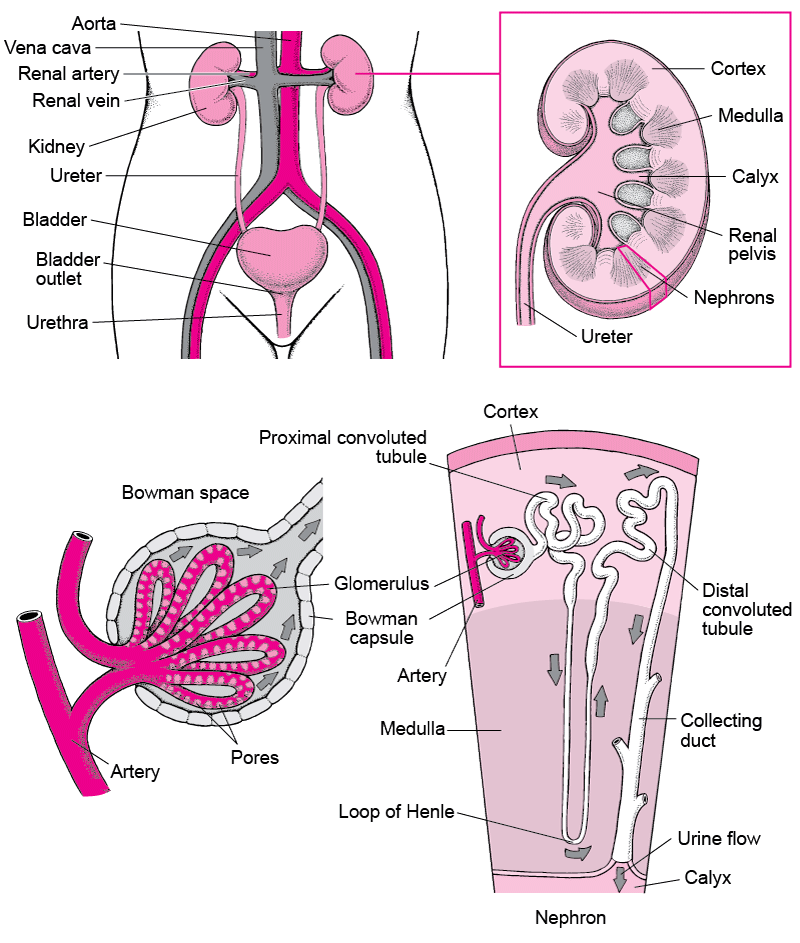Establishing the Medullary Gradient for Urine Concentration
The kidneys filter the blood to concentrate waste products, which will be flushed out of the body using excess water as a solvent. The functional unit of the kidney that concentrates urine appropriately is the nephron.
Notice how the collecting duct of the nephron drains into the calyx. This is the easiest way to visualize the orientation of nephrons in the kidney.
There are two types of nephrons, differentiated by the level of penetration into the kidney: cortical nephrons and juxtamedullary nephrons. Juxtamedullary nephrons penetrate deeper into the medulla than cortical nephrons (which barely scratch the surface of the outer medulla) and thus have a higher concentrating capability, since deeper penetration allows filtrate exposure to a steeper solute gradient and therefore a stronger osmotic driving force. Any process, then, that increases the strength of this gradient, allows for more concentration of urine.
One such process is countercurrent multiplication, which occurs primarily in the loop of Henle of juxtamedullary nephrons. When the ascending limb of the loop of Henle actively transports solutes into the interstitial space between the limbs of the Loop, water follows. This is establishes an osmotic gradient favoring solute transport from the descending loop into the interstitial space, thereby diluting the contents of the descending loop. As the contents of the descending loop travel down the medulla, the filtrate becomes more concentrated and this process of osmotic altering continues. This repetition increases medullary gradient strength because a high amount of solute is being added to the interstitial space, and therefore pulls out more water and more solute. This repeated addition of solute into the medullary interstitial space is what inspired the name, “countercurrent multiplication.”
Another mechanism that strengthens the medullary gradient occurs in the collecting duct, or the terminal portion of the nephron. NaCl is actively transported into the medulla, and urea diffuses out passively. This further increases the strength of the medullary gradient, thereby facilitating urine concentration.
To learn more about the methods by which the medullary gradient is steepened, check out the following resources:
https://www.khanacademy.org/test-prep/mcat/organ-systems/the-renal-system/a/renal-physiology-counter-current-multiplication - a brief article explaining how countercurrent multiplication works, as well as a bit about urea cycling and how that also contributes to the medullary gradient.
https://youtu.be/hjQd9nWAxQk - a concise video explaining the countercurrent multiplier, with great visuals.

